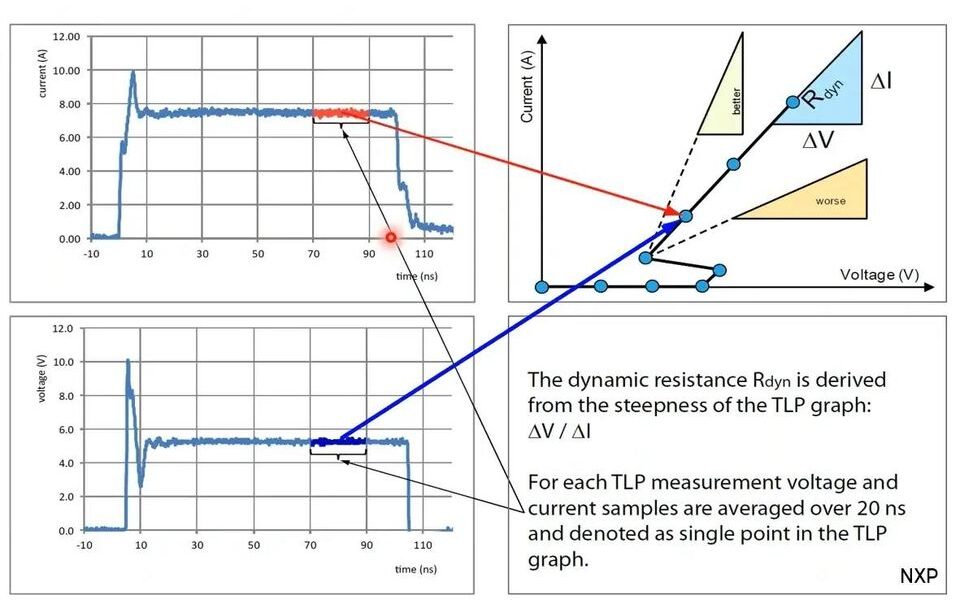
Continuing with the ESD series, one slightly advanced topic is TLP testing. When you design a product, you usually protect the device against ESD strikes. ESD strikes are given with an ESD gun(Think of it like a stun gun with a very short pulse width) going around and zapping the different parts of a product to see its immunity to ESD strikes. In a test lab, ESD strikes are usually done at points where a potential contact can happen. The problem with this test is that you get a binary pass or fail test report at the end of the test. This is OK for most devices but it doesn’t give you a clearer picture of what happened in a circuit in an ESD event. For eg, I want to understand what ESD current flow can the device can resist and which trace can handle what voltage etc. That’s where TLP testing comes into play.

In TLP testing, a high-voltage, high-current very short pulse is applied to the device under test through a transmission line. The device’s response to the TLP is then measured to determine its susceptibility to ESD damage. This is done by measuring the voltage and current on the device, as well as its ability to function correctly after the ESD event. TLP testing is a much more controlled way of getting repeatable tests done for ESD. TLP tests are usually used to generate the IV curves(which are very important) that you see in ESD protection device datasheets. The measurement setup needed for the TLP test is much more expensive than a typical ESD gun and hence you won’t find them in normal testing labs. TLP testing is done for the absolute characterisation of an ESD event.
For more info, I would suggest reading tech notes from the esdemc and sofics website.
0 Comments
Comments are closed.